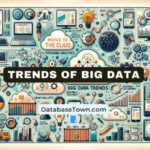How big data influences social media strategies is a vital consideration for brands aiming to thrive in today’s digital landscape. As consumer behavior increasingly shifts online, the ability to leverage vast amounts of data allows marketers to gain deeper insights into their audience’s preferences and habits. This understanding lays the foundation for crafting tailored campaigns that resonate with specific demographics, ensuring that messages not only reach but also engage effectively.
Through sophisticated analytics, companies can harness the power of big data to track and interpret interactions across various platforms. This data-driven approach not only enhances the precision of targeting efforts but also informs real-time decision-making, enabling brands to pivot their strategies swiftly in response to emerging trends and audience feedback.
The Role of Big Data in Social Media Marketing

In the rapidly evolving world of social media, big data serves as a vital instrument in shaping marketing strategies and enhancing consumer engagement. By harnessing vast amounts of data generated on various social platforms, brands can gain insights into consumer behavior, preferences, and trends. This analytical approach enables marketers to make informed decisions, optimizing their social media campaigns for better results.Big data analytics plays a crucial role in understanding consumer behavior on social media.
By tracking interactions, engagement levels, and content preferences, businesses can identify patterns that inform their marketing efforts. For instance, analyzing user comments, likes, and shares can reveal what resonates with the audience, allowing brands to tailor their messaging accordingly. This deep understanding of consumer behavior fosters a stronger connection with potential customers, ultimately driving loyalty and conversions.
Data-Driven Decision-Making in Social Media Campaigns
The impact of data-driven decision-making is profound in crafting social media campaigns. Marketers can utilize data to segment their audience based on demographics, interests, and behavior, leading to more targeted and effective campaigns. This approach not only maximizes the reach of content but also enhances engagement rates. Data-driven strategies ensure that marketing efforts are aligned with consumer expectations, resulting in higher return on investment (ROI).To illustrate, consider a marketing campaign that analyzes data from previous social media posts.
By examining which types of content received the most engagement, brands can replicate successful strategies and refine their approach to meet the preferences of their audience. The importance of leveraging data for continuous improvement cannot be overstated, as it empowers brands to adapt to changing consumer needs and market dynamics.Furthermore, various methods are employed to collect and analyze data from social media platforms.
Companies use tools such as social listening software, which tracks mentions, hashtags, and sentiment analysis across platforms. These tools provide real-time insights into public perception and brand reputation. Additionally, analytics platforms like Google Analytics and native social media analytics tools offer comprehensive data on audience demographics, engagement metrics, and traffic sources.The following methods are commonly used in data collection and analysis:
- Social Listening: Monitoring conversations and mentions related to a brand or industry to understand sentiment and trends.
- Surveys and Polls: Directly engaging users for feedback on products, services, or content preferences.
- Web Analytics: Using tools like Google Analytics to track user interactions and behavior on social media linked content.
- Engagement Metrics Analysis: Assessing likes, shares, comments, and other interactions to gauge content performance.
By utilizing these data collection and analysis methods, brands can create a robust framework for understanding their audience and driving successful social media marketing strategies.
Target Audience Segmentation Through Big Data

Understanding the audience is paramount for any marketing strategy. Through big data analytics, businesses can achieve unparalleled insights into consumer behavior, preferences, and demographics. This allows for precise targeting of potential customers, ensuring that marketing efforts are directed towards the most relevant audiences. By leveraging these insights, companies can optimize their social media strategies, leading to higher engagement and conversion rates.Segmentation of target audiences using big data involves various techniques that allow marketers to categorize consumers based on diverse attributes.
These attributes can include age, location, interests, purchasing behavior, and online interactions. By analyzing massive datasets, businesses can identify patterns and trends that inform their marketing approaches. This capability not only enables more effective communication with audiences but also enhances the overall customer experience.
Techniques for Segmenting Audiences Based on Big Data Insights
Several techniques can be employed for effective audience segmentation through big data analytics:
- Demographic Segmentation: This method categorizes audiences based on demographic information such as age, gender, income level, and education. For example, a luxury brand might target individuals aged 30-50 with higher income brackets, tailoring its social media campaigns to reflect their lifestyle preferences.
- Geographic Segmentation: Utilizing location data, businesses can target audiences based on their geographical areas. For instance, a local restaurant can create campaigns that appeal to residents within a specific radius, promoting special offers or events to attract nearby customers.
- Behavioral Segmentation: This approach focuses on the behavior of consumers, including their purchasing habits, brand interactions, and online activities. An e-commerce platform might analyze users’ browsing history to send personalized recommendations or reminders for items they showed interest in.
- Psychographic Segmentation: By understanding consumers’ lifestyles, interests, and values, brands can create targeted messages that resonate on a deeper emotional level. A fitness brand may develop campaigns that speak to health-conscious individuals who value sustainability and wellness.
Examples of personalized marketing strategies derived from data analysis illustrate the effectiveness of audience segmentation. For instance, Netflix uses viewer data to recommend shows and movies tailored to individual tastes. By analyzing viewing history and engagement metrics, the platform successfully personalizes user experiences, keeping subscribers engaged.Similarly, Amazon employs big data to create personalized shopping experiences. By analyzing previous purchases and browsing behavior, Amazon can showcase relevant products to users, often leading to increased sales and customer loyalty.
Database performance can often be hindered by various bottlenecks, making it crucial to identify and address them. Factors such as inefficient queries, locking issues, and inadequate indexing are among the most common culprits. For a deeper understanding of these challenges, check out this informative article on what are the most common database performance bottlenecks.
This level of personalization not only enhances user satisfaction but also fosters a sense of brand loyalty.Targeting specific demographics on social media platforms offers numerous benefits. These include increased engagement rates, higher conversion rates, and improved customer satisfaction. By focusing marketing efforts on well-defined segments, brands can create more relevant and appealing content that resonates with their audiences. This tailored approach helps in maximizing return on investment (ROI) for marketing campaigns and allows brands to build stronger relationships with their customers, ultimately leading to enhanced brand loyalty and advocacy in the long run.
In today’s data-driven world, leveraging big data technologies for real time processing is essential for businesses seeking to gain a competitive edge. These technologies enable organizations to analyze vast amounts of data quickly, facilitating timely decision-making and enhancing operational efficiency.
Measuring Social Media Performance with Big Data
In the era of digital marketing, the influence of big data on social media performance measurement has become increasingly pivotal. Brands now leverage vast amounts of data to assess their social media strategies effectively, enabling them to make informed decisions that enhance engagement and reach. Understanding the right metrics and key performance indicators (KPIs) is essential for evaluating the success of social media campaigns.Big data provides insights that transform raw data into meaningful metrics, helping businesses gauge their performance across various platforms.
This data-driven approach allows for a comprehensive analysis of user behavior, preferences, and interactions, facilitating the adjustment of strategies in real-time. The integration of big data analytics into social media measurement empowers brands to refine their efforts, ultimately improving engagement and return on investment (ROI).
Metrics and KPIs Influenced by Big Data
Identifying relevant metrics and KPIs is crucial for tracking social media performance. Big data enhances the ability to monitor these indicators, which reflect the effectiveness of social media strategies. Key metrics include:
- Engagement Rate: Measures the level of interaction (likes, shares, comments) relative to total followers. This metric indicates how well content resonates with the audience.
- Reach: The total number of unique users who see the content. It helps brands understand their visibility across platforms.
- Conversion Rate: Tracks the percentage of users who take a desired action, such as signing up for a newsletter or making a purchase, after engaging with social media content.
- Click-Through Rate (CTR): The ratio of users who click on a specific link to the number of total users who view a page, email, or advertisement, crucial for assessing the effectiveness of calls-to-action.
- Sentiment Analysis: Evaluates the tone of social media conversations surrounding a brand, product, or campaign, providing insights into public perception and customer satisfaction.
Monitoring these metrics allows brands to gauge the effectiveness of their social media strategies and adjust their content accordingly.
Tools and Technologies for Measuring Social Media Performance
To effectively analyze social media performance, businesses utilize a range of tools and technologies. These solutions streamline data collection and analysis, enabling marketers to make informed decisions. Key tools include:
- Google Analytics: Tracks website traffic originating from social media platforms, offering insights into user behavior and the effectiveness of social campaigns.
- Hootsuite: Provides a comprehensive overview of various social media platforms, allowing users to monitor engagement, schedule posts, and analyze performance metrics in one place.
- Sprout Social: Offers advanced reporting features, including audience demographics and engagement statistics, assisting brands in understanding their target market better.
- Buffer: Simplifies social media management and performance analysis, providing detailed reports on post engagement and audience growth.
- Brandwatch: Enables sentiment analysis by tracking conversations and mentions across social media, helping brands understand public perception.
These tools not only enhance measurement but also aid in optimizing social media strategies based on real-time data.
Real-Time Data Monitoring Enhancing Social Media Presence
Real-time data monitoring plays a vital role in strengthening a brand’s social media presence. By continuously tracking engagement, trends, and user interactions, businesses can respond promptly to audience feedback and emerging trends. This proactive approach enables brands to join conversations, address customer inquiries, and capitalize on popular topics as they arise.For instance, during a major event or trending topic, real-time monitoring allows brands to create timely content that resonates with current discussions.
This agility not only boosts engagement but also enhances brand visibility and relevance. Implementing real-time analytics facilitates data-driven decisions, ensuring that brands can pivot their strategies efficiently to maximize performance. As a result, organizations can foster deeper connections with their audience, ultimately driving loyalty and growth in a competitive digital landscape.
Enhancing Customer Engagement via Data Insights
In today’s fast-paced digital landscape, customer engagement has become a vital component of successful social media strategies. Leveraging big data enables brands to better understand their audience, tailor content to their preferences, and enhance interactions that foster loyalty. By utilizing data insights, companies can transform their approach to customer engagement, ensuring that interactions are not only meaningful but also impactful.Data-driven techniques for improving customer interaction focus on understanding customer behavior, preferences, and feedback.
By analyzing vast amounts of data, brands can uncover trends and insights that inform their strategies, leading to more personalized and engaging experiences. For instance, social media platforms collect user data that can be used to segment audiences, allowing businesses to curate content that resonates with specific demographics.
Techniques for Improving Customer Interaction
Implementing effective engagement strategies requires a thorough understanding of the tools and techniques that can be utilized. Below are some key methods that businesses can adopt to enhance customer interaction based on data findings:
- Sentiment Analysis: Utilizing natural language processing tools to gauge customer sentiment towards products or services helps brands respond more appropriately to customer needs and concerns.
- Personalization: Tailoring content and offers based on user preferences and past interactions creates a more relevant experience, increasing the likelihood of engagement.
- Predictive Analytics: Analyzing historical data to predict future customer behavior allows brands to proactively address potential issues or opportunities, enhancing the customer experience.
- Real-time Interaction: Monitoring social media channels for real-time feedback enables brands to engage with customers immediately, fostering a sense of connection and responsiveness.
Case Studies of Successful Engagement Strategies
Examining real-life examples of businesses that have effectively used big data to enhance customer engagement provides valuable insights. A few notable case studies include:
- Coca-Cola: By analyzing customer data from social media interactions, Coca-Cola was able to launch targeted campaigns that resonated with different audience segments, resulting in a significant increase in customer engagement and brand loyalty.
- Netflix: Utilizing viewing data, Netflix personalizes recommendations for users, leading to increased watch time and subscriber retention. Their data-driven approach has revolutionized how content is consumed, creating a more engaged customer base.
- Amazon: Through advanced data analytics, Amazon is able to provide personalized shopping experiences, which significantly enhances customer satisfaction and encourages repeat purchases.
Comparison of Traditional vs. Data-Driven Approaches
The shift from traditional marketing methods to data-driven strategies marks a significant evolution in fostering customer loyalty on social media. Traditional approaches often relied on broad demographics and assumptions, whereas data-driven strategies utilize real-time insights for more targeted engagement. Data-driven strategies enable businesses to:
- Make informed decisions based on precise data rather than guesswork.
- Identify emerging trends and adapt to changing customer preferences quickly.
- Create tailored content and campaigns that speak directly to individual customer segments.
This shift not only enhances customer loyalty but also builds a stronger brand-customer relationship, driven by a deeper understanding of customer needs and expectations.
“Brands that utilize data insights to drive engagement are more likely to cultivate lasting relationships with their customers.”
Future Trends of Big Data in Social Media Strategies: How Big Data Influences Social Media Strategies
As we look ahead, the integration of big data within social media strategies is poised to evolve dramatically. The relationship between these two domains is becoming increasingly intertwined, with brands leveraging advanced analytics to enhance their marketing efforts. The future will see a more sophisticated utilization of big data, driven by emerging technologies and changing consumer behaviors.Emerging technologies such as artificial intelligence (AI), machine learning, and real-time analytics are set to redefine how brands engage with their audiences through social media.
These innovations provide the tools to extract deeper insights from massive datasets, allowing for more personalized and effective marketing strategies. However, with these advancements come challenges that brands must navigate to successfully integrate big data into their social media strategies.
Predictions on Evolving Relationship
The relationship between big data and social media marketing will continue to strengthen as technology progresses. Brands will increasingly rely on predictive analytics to forecast consumer behavior and preferences. This approach will enable businesses to tailor their content and advertising strategies more effectively. Key predictions include:
- The rise of hyper-personalization, where brands create tailored experiences based on individual user data.
- Increased reliance on automated content optimization, utilizing algorithms that analyze engagement metrics in real time to adjust campaigns dynamically.
- Greater emphasis on cross-platform analytics, allowing brands to track user interactions across multiple social media channels to gain comprehensive insights.
Emerging Technologies Impact, How big data influences social media strategies
Several emerging technologies are impacting how brands utilize big data in their social media strategies. These include:
- Artificial Intelligence (AI): AI-powered tools are capable of analyzing vast amounts of data to predict trends and consumer behavior, enabling brands to make data-driven decisions.
- Natural Language Processing (NLP): NLP allows brands to analyze customer sentiment and feedback from social media conversations, enhancing understanding of audience perceptions.
- Blockchain: By ensuring data integrity and transparency, blockchain technology can provide more reliable data sources for brands, enhancing trust in the data-driven decision-making process.
Challenges in Integration
Despite the benefits of integrating big data with social media strategies, brands will face several challenges as they navigate this evolving landscape. These challenges include:
- Data Privacy Concerns: With increasing regulations like GDPR, brands must be cautious about how they collect and use consumer data, ensuring compliance while still gaining insights.
- Data Overload: The sheer volume of data generated can overwhelm brands, making it difficult to extract actionable insights without the right tools and strategies in place.
- Skill Gaps: As technology advances, brands may struggle to find skilled professionals who can effectively analyze and interpret big data, hindering their ability to leverage insights.
“The future of social media strategy lies in the ability to harness big data effectively, turning insights into impactful marketing actions.”

